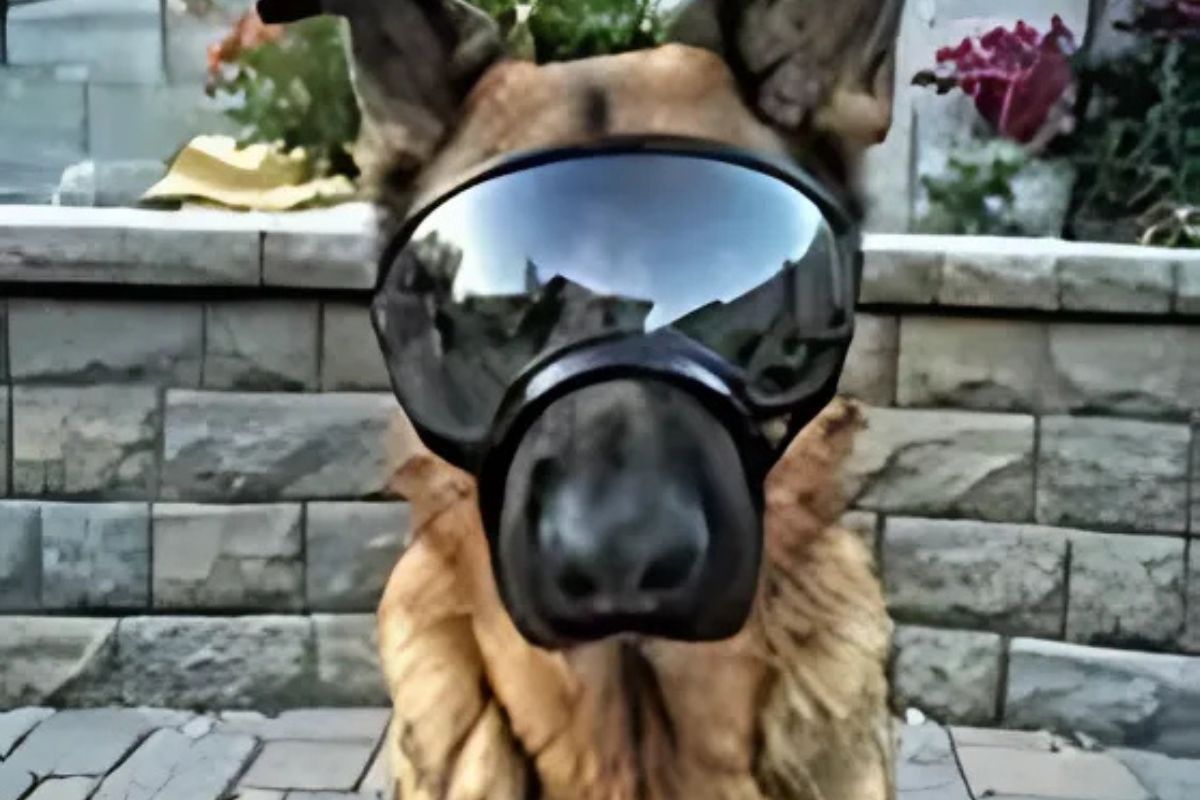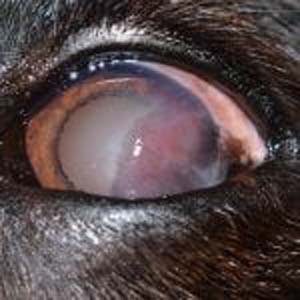Pet Pannus (Chronic Superficial Keratitis) in Spring, TX
Learn the symptoms of Pannus in pets and how we deliver effective treatments at North Houston Veterinary Ophthalmology in Spring, TX.

Pet Pannus (Chronic Superficial Keratitis)
Understanding Pet Pannus
Chronic Superficial Keratitis, also known as Pannus, is a progressive immune-mediated eye disease in which the corneas become increasingly opaque and inflamed. This can result in a concerning appearance in the eyes characterized by fleshy growths that may resemble tumors, but these will likely not be painful to your pet. However, if not treated, the condition can still lead to significant vision impairment and, potentially, blindness.

Clinical Signs of Pannus
- Progressive corneal redness and cloudiness
- Loss of pigment and nodule formation on the third eyelid
- Conjunctival redness
- Raised, fleshy masses on the cornea, which can be mistaken for cancer
While Pannus is not painful, it can severely impact vision over time.
Causes of Pet Pannus
Pannus is an immune-mediated disease, meaning the immune system attacks normal corneal tissue. It is common in German Shepherds but can affect any breed. UV radiation exposure, particularly at elevations above 3,000 feet, is a significant contributing factor.
Treating Pet Pannus
Effective treatment for Pannus involves immune-modulating medications, typically administered as eye drops. These medications can significantly reverse corneal opacity, improving vision. Lifelong maintenance therapy is essential to prevent recurrence and can include daily medications or surgical implants that slowly release medication over time.
Also, avoiding long exposure to UV light is important, so it is recommended that outside time for your pet be limited between 10 a.m. and 4 p.m. when UV rays are at their peak. Also, some dogs can be taught to wear tinted goggles when outside to provide additional protection.
Why Choose North Houston Veterinary Ophthalmology?
At North Houston Veterinary Ophthalmology, we are dedicated to managing and treating Pannus to improve your pet’s quality of life.
Personalized Care Plans
We tailor treatment plans to meet the unique needs of each pet, ensuring the best possible outcomes. Our comprehensive approach addresses both immediate symptoms and long-term management to maintain your pet’s vision.
Advanced Diagnostic Tools
Our Spring, TX facility has advanced diagnostic tools to diagnose and monitor Pannus accurately. This enables us to create exact treatment plans and modify therapy to provide the best possible care.
Compassionate Support
Our ophthalmologist(s) utilize advanced diagnostic tools to diagnose and monitor Pannus accurately. The second sentence is fine. Our team provides compassionate support and education to pet owners, helping them manage their condition effectively at home. We are always available to answer your questions and provide guidance throughout your pet’s treatment journey.
Comprehensive Care for Pet Pannus
Pannus (Chronic Superficial Keratitis) can significantly impact your pet’s vision. At North Houston Veterinary Ophthalmology, we provide comprehensive care to manage and treat this condition. By recognizing the signs, understanding the causes, and seeking effective treatments, pet owners can protect their pet’s eye health. If you suspect your pet may have Pannus, contact us today to schedule a consultation. We are here to help ensure your pet maintains the best possible quality of life.